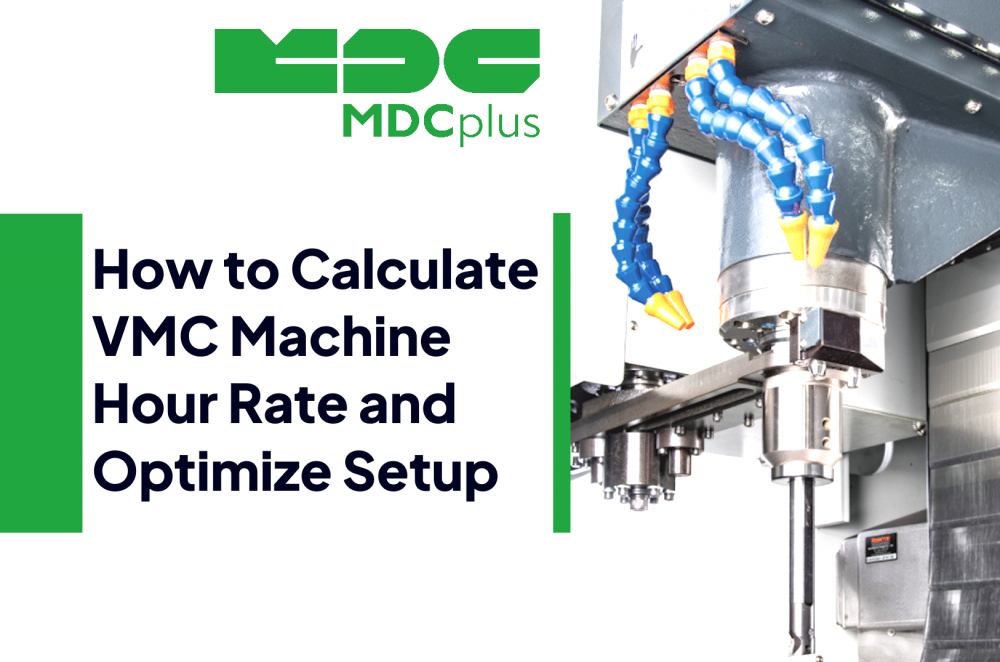How to Calculate VMC Machine Hour Rate and Optimize Your Setup
The machine hour rate (MHR) is a crucial metric for cost control and production planning in manufacturing operations involving Vertical Machining Centers (VMCs). With digital manufacturing monitoring systems becoming more prevalent, businesses can achieve unprecedented levels of transparency and efficiency.
What is VMC Machine Hour Rate?
The VMC Machine Hour Rate represents the cost of operating a VMC for one hour. This rate includes all the expenses associated with the machine's usage, such as depreciation, maintenance, power consumption, labor, tooling, and overheads.
Key Components of MHR Calculation:
- Depreciation Cost: Annual depreciation of the machine, divided by annual working hours.
- Power Consumption: Average kilowatt usage multiplied by the local electricity rate.
- Labor Costs: Operator wages, benefits, and associated labor overheads.
- Maintenance and Consumables: Regular maintenance, lubricants, coolant, filters, etc.
- Tooling Costs: Estimated tool wear and tool replacement per hour.
- Overheads: Indirect costs like factory rent, administration, insurance.
MHR calculation for VMC:
MHR = (Depreciation + Power + Labor + Maintenance + Tooling + Overheads) / Annual Operating Hours
Which Parameters Are Most Challenging and Overlooked?
Hardest to Optimize: Overheads
Overhead costs—like rent, insurance, and admin—are fixed or semi-variable. These are spread across operations, and reducing them often requires strategic restructuring, which makes them hard to directly control at the machine level.
Most Commonly Overlooked: Tooling Costs
Tooling costs are frequently underestimated or generalized. Real-time tracking of tool wear, life, and replacement is often missing. Inefficient tooling increases not only the cost but also affects machine uptime and product quality. Digital monitoring tools can help by tracking tool usage and linking it to specific jobs or parts.
Optimizing VMC Setup Times
Reducing setup times is key to improving machine utilization and throughput. Here are strategies:
- Standardization of Setup Processes: Create checklists and standardized tooling to minimize variation.
- Use of Quick-Change Tooling Systems: Reduces manual intervention and changeover time.
- Pre-Setting Tools Offline: Use tool presetters to prepare tools outside the machine.
- Setup Simulation and Training: Use CAM software simulations and train operators to reduce trial-and-error.
Modern manufacturing monitoring systems (e.g., IIoT platforms, MES) enable real-time visibility into machine utilization and downtime. Key benefits include:
- Real-Time Performance Tracking: Know which machines are underperforming.
- Data-Driven Setup Optimization: Analyze historical setup times to identify bottlenecks.
- Predictive Maintenance: Use sensor data to plan maintenance, reducing unplanned downtime.
- OEE Analysis: Track Overall Equipment Effectiveness to drive continuous improvement.
Conclusion
Calculating the VMC machine hour rate accurately and optimizing setups through standard practices and digital monitoring can significantly reduce operational costs and increase output. Embracing smart manufacturing technologies transforms data into actionable insights, enabling precision in decision-making and sustainable competitiveness.
About MDCplus
Our key features are real-time machine monitoring for swift issue resolution, power consumption tracking to promote sustainability, computerized maintenance management to reduce downtime, and vibration diagnostics for predictive maintenance. MDCplus's solutions are tailored for diverse industries, including aerospace, automotive, precision machining, and heavy industry. By delivering actionable insights and fostering seamless integration, we empower manufacturers to boost Overall Equipment Effectiveness (OEE), reduce operational costs, and achieve sustainable growth along with future planning.
Ready to increase your OEE, get clearer vision of your shop floor, and predict sustainably?
